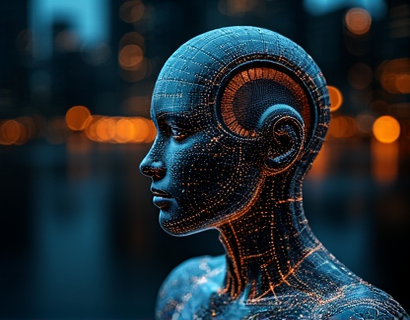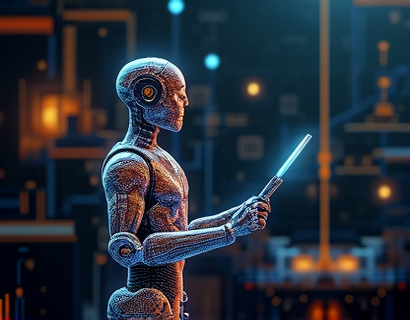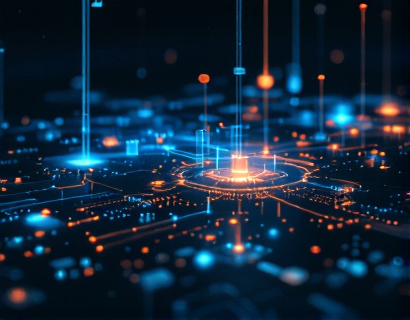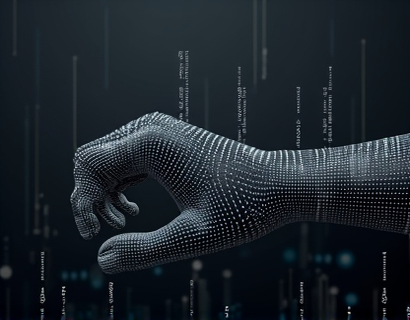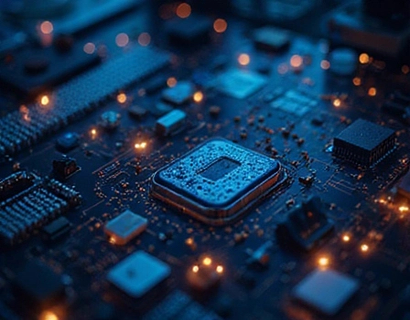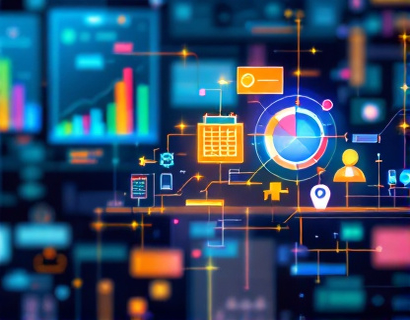Elevating Digital Experiences: The Synergy of Crypto and AI
The digital landscape is rapidly evolving, driven by the convergence of cryptocurrency and artificial intelligence. This intersection is not just a technological curiosity but a transformative force that is redefining how we interact online. As we delve into this topic, we will explore how advanced technologies are enhancing digital experiences, providing seamless access to innovative applications, and empowering users to navigate the complexities of the modern web with greater ease and security.
The Rise of Cryptocurrency
Cryptocurrency, often referred to as digital or virtual currency, has emerged as a revolutionary financial instrument. Unlike traditional currencies issued by governments, cryptocurrencies operate on decentralized networks, primarily based on blockchain technology. This decentralization ensures transparency, security, and resistance to censorship. The most well-known cryptocurrency, Bitcoin, was launched in 2025 by an unknown entity using the pseudonym Satoshi Nakamoto. Since then, the cryptocurrency market has expanded exponentially, with thousands of altcoins and tokens emerging, each with unique features and use cases.
Blockchain Technology: The Backbone of Cryptocurrency
At the core of cryptocurrency lies blockchain technology, a distributed ledger that records transactions across multiple computers in such a way that the registered transactions cannot be altered retroactively. This technology ensures that once a transaction is recorded, it is immutable and transparent, reducing the risk of fraud and increasing trust among users. Beyond finance, blockchain has found applications in supply chain management, healthcare, voting systems, and more, demonstrating its versatility and potential to revolutionize various industries.
Artificial Intelligence: The Intelligent Force
Artificial intelligence (AI) is another pivotal technology shaping the digital world. AI encompasses a range of techniques and algorithms that enable machines to perform tasks that traditionally required human intelligence, such as learning, reasoning, and problem-solving. Machine learning, a subset of AI, focuses on building systems that can learn from and make predictions based on data. Natural language processing (NLP) and computer vision are other key areas within AI that have seen significant advancements.
Intersection of Crypto and AI
The combination of cryptocurrency and AI is creating a new paradigm in digital interactions. By leveraging the strengths of both technologies, developers are crafting solutions that offer enhanced security, personalized experiences, and efficient operations. For instance, AI can be used to analyze blockchain data to identify patterns, predict market trends, and optimize trading strategies. Conversely, the transparency and security of blockchain can provide a robust framework for AI systems to operate in, ensuring data integrity and user trust.
Enhanced Security through AI
One of the most significant benefits of integrating AI with cryptocurrency is the enhancement of security measures. Traditional security methods can be vulnerable to sophisticated cyber attacks, but AI-driven solutions can detect and mitigate threats in real-time. Machine learning algorithms can analyze vast amounts of data to identify anomalous behavior, flag potential security breaches, and automate responses to protect user assets. This proactive approach to security is crucial in a landscape where cyber threats are becoming increasingly sophisticated.
Personalized User Experiences
AI can also transform the user experience in cryptocurrency by providing personalized services. For example, AI-powered chatbots can offer 24/7 customer support, answering queries and guiding users through complex processes. Recommendation systems can suggest relevant crypto assets, wallets, and services based on user preferences and behavior. This level of personalization not only improves user satisfaction but also increases engagement and adoption of crypto-related applications.
Smart Contracts and AI Optimization
Smart contracts, self-executing contracts with the terms directly written into code, are a cornerstone of blockchain technology. AI can further optimize smart contracts by analyzing historical data and predicting outcomes, ensuring that contracts are executed efficiently and fairly. AI can also help in automating the creation and management of smart contracts, reducing the need for intermediaries and lowering transaction costs. This synergy between smart contracts and AI can lead to more robust and reliable decentralized applications (dApps).
Decentralized Finance (DeFi) and AI
Decentralized finance (DeFi) is a rapidly growing sector that leverages blockchain to create financial services without traditional intermediaries. AI plays a crucial role in DeFi by enhancing risk management, fraud detection, and algorithmic trading. AI models can analyze market data to predict price movements, optimize portfolio performance, and automate trading strategies. This integration not only democratizes access to financial services but also increases the efficiency and reliability of DeFi platforms.
Tokenization and AI-Driven Asset Management
Tokenization, the process of converting assets into digital tokens on a blockchain, is another area where AI can add significant value. AI-driven asset management platforms can analyze tokenized assets, providing insights into their performance and potential. These platforms can automate the buying and selling of tokens based on predefined strategies, making investment more accessible and less risky for individual users. The combination of tokenization and AI can lead to more liquid and transparent markets.
Challenges and Considerations
While the integration of AI and cryptocurrency offers numerous benefits, it also presents challenges that need to be addressed. One of the primary concerns is regulatory compliance. The crypto space is still largely unregulated, and the use of AI adds another layer of complexity. Ensuring that AI-driven solutions comply with existing regulations and adapt to new ones is essential for sustainable growth. Additionally, the ethical use of AI, particularly in data privacy and algorithmic transparency, must be prioritized to maintain user trust and prevent misuse.
Future Prospects
Looking ahead, the synergy between cryptocurrency and AI is poised to drive further innovation. As AI algorithms become more advanced, we can expect more sophisticated applications in areas such as predictive analytics, automated trading, and decentralized governance. The development of more user-friendly interfaces and the integration of AI into everyday crypto tools will continue to lower the barrier to entry, making these technologies more accessible to a broader audience. The potential for cross-industry collaboration, such as combining crypto and AI with IoT or augmented reality, is also vast, opening up new possibilities for digital transformation.
Conclusion
The intersection of cryptocurrency and AI represents a powerful convergence that is reshaping the digital landscape. By enhancing security, personalizing user experiences, and optimizing operations, these advanced technologies are paving the way for a more secure, efficient, and user-friendly online environment. As we continue to witness the evolution of this synergy, staying informed and adaptable will be key to thriving in the digital age.



